How Nepali Cuisine uses Salt, Fat, Acid and Heat
Episode 3 – ACID (Subscribe for four more episodes, the next one is HEAT)
Food represents Nepal's culture, tradition and practices based on geographical regions or ethnicity. Cooking is not all about food; it is a culture and tradition that brings together family, community, society and nation. In the globalized world and with internet connectivity, food is not limited to a particular geographical area and culture. It is beyond borders, and it is science, too. You can find "Dal Bhat" in the busy streets of Paris, "Momo" in Jackson Heights and "Choila" in the corners of London Street.
I started cooking in childhood, primarily to support my mother. Most of our favourite dishes come from our mother's recipe. Over time, I learned many cooking styles and experimented with fusion food from different cultures and traditions. While exploring culinary practices, as a science student, I decided to explore how the science of food influences Nepali cuisine.
Thanks for reading Truth Unfiltered! Subscribe for free to receive new posts and support my work.
Therefore, this article covers how salt, fat, acid, and heat influence Nepali cuisine and their linkages to culture and practices. The article is based on the book "Salt, Fat, Acid and Heat [1]" by Samin Nosrat. I want to share how these elements influence Nepali cuisines and food cultures. I will cite some examples from Nepali cuisines like Khas, Tibetan-influenced, Thakali, Newari, Limbu, Terai, or Tharu.
The article will have five sections. Each will cover salt, heat, acid, and fat, and the last one will explain how these elements make Nepal's two most famous dishes delicious. It’s time for FAT.
How Nepali Cuisine Uses ACID
Acid
Citrus juice, laspi's meat, gel-like chuk and other sour products, including tomato, are common in every Nepali Kitchen. In many places, each meal is accompanied by a pickle, be it fresh or fermented. These are considered digestive elements after heavy meals; thus, for example, after the Newari feast, it is expected to serve Pau (Lapsi's pickle). Tomato or potato pickles are common to every Nepali; however, Nepalese can pickle anything from vegetables to meat. The chapter will cover how the acid is used to enhance the taste and preserve the food, taking the example of Gundruk/Sinki.
Gundruk is fermented dried vegetable leaves, and it can be used for months if protected from moisture, forming a valuable source of nutrition during monsoon and winter when hardly any vegetables are available. Since the raw materials are readily available, traditionally, preparing gundruk does not require any additional resources.[2] Gundruk is the product of leaves of mustard, radish, rapeseed, cauliflower, etc..
Gundruk has traditionally been prepared at the household level using various fermentation containers, including pits, dhungro (typically made from bamboo stems), wooden vessels, plastic jars, glass jars, and earthenware pots.[3] Generally, the preparation takes about a week to a month. At first, vegetable leaves are cleaned (remove roots and foreign matter) and then dried in the sun (1–2 days, depending on the weather). After mild crushing, the dried leaves are soaked briefly in hot water. They are then filled in a perforated tin or earthen jar and hand-pressed with a heavy article, such as a large stone, to remove surplus water.[4] After that, they are kept in a warm, dry place for fermentation.
Fermentation occurs spontaneously by lactic acid bacteria inhabiting the vegetable leaves. After fermentation, the fresh gundruk is sun-dried, packaged and stored. During fermentation, the acidity of Pediococcus and Lactobacillus species increases by many folds. The final product contains about 0.5% acidity as lactic.[5] The quality of gundruk mainly depends on the balanced production of lactic acid (about 50%) and acetic acid (about 35%).iv The "Sinki" is similar in that the radish roots are used instead of leaves, and the process remains the same.
Valued for its uniquely appetizing flavour, gundruk has risen from its typical rural food to the delicacy of fancy restaurants in the city. Gundruk is listed as a core dish not only in Nepal but also in Nepali restaurants worldwide. People either make gundruk as a curry by adding potatoes, taros and different spices or make it as a pickle by mixing gundruk with onions, chilly and other spices.
Gundruk is more than just a nutrition supplement. The most cherished mouth-watering delicacies prepared by gundruk are Gundruk Sadheko, Gundruk ko Achaar, and Gundruk Jhol (Gundruk Soup). Gundruk has a slightly tangy, fermented taste and is often blended with spices to create gundruk sadheko. In rural areas, gundruk sadheko is widely used as a pickle alternative, served alongside dal bhat or dhido, added to soups, or even combined with meat dishes.
Additionally, a hot and spicy bowl of Gundruk Jhol serves as a perfect pick-me-up during misty monsoons and chilly winter days, providing warmth and aiding digestion. You’ll love it when you take a hot sip and feel its warmth burn slightly as it travels down your throat and chest.
The next episode is 4 - HEAT. The previous episode 2 - FAT
The images in the article are from Google Images, and I acknowledge all the photographers who have shared them.
[1] Samin Nosrat. (2017). Salt, Fat, Acid, Heat: Mastering the Elements of Good Cooking. Simon & Schuster.
[2] Bogati, K. (2020). Formulation of Gundruk Soup Mix and its evaluation (By Tribhuvan University & Parkhibas Agriculture Research Center; B. K. Rai, Ed.). http://202.45.146.37:8080/jspui/bitstream/123456789/158/1/Gundruk%20soup%20mix%20final%20black%20copy%20file.pdf
[3] Shrestha, R., Bhattarai, R. R., Tribhuvan University, Nebico Biscuits Industries Pvt. Ltd., Bhattarai, R. R., Central Campus of Technology, Nebico Biscuits Industries Pvt. Ltd., Academic Journals, Katawal, S. B., Central Campus of Technology, & Nebico Biscuits Industries Pvt. Ltd. (2012). EFFECT OF DIFFERENT FERMENTATION CONTAINERS ON THE QUALITY OF GUNDRUK. International Journal of Current Research. https://www.journalcra.com/sites/default/files/issue-pdf/2757.pdf
[4] Tamang, J. P., Sarkar, P. K., Department of Botany, University of North Bengal, NBU 734430, District of Darjeeling, West Bengal, India, Northern Regional Research Center, Agricultural Research Service, US Department of Agriculture, Peoria, Illinois 61604, USA, & Hesseltine, C. W. (1987). Traditional fermented foods and beverages of Darjeeling and Sikkim-a review. In J Sci FODd Agric (pp. 375–385) [Journal-article]. https://typeset.io/pdf/traditional-fermented-foods-and-beverages-of-darjeeling-and-2h11zaonb3.pdf
[v] Karki, T., Itoh, H., Nikkuni, S., & Kozaki, M. (1986). Improvement of gundruk processing by selected lactic strains. NIPPON SHOKUHIN KOGYO GAKKAISHI, 33(10), 734–739. https://doi.org/10.3136/nskkk1962.33.10_734




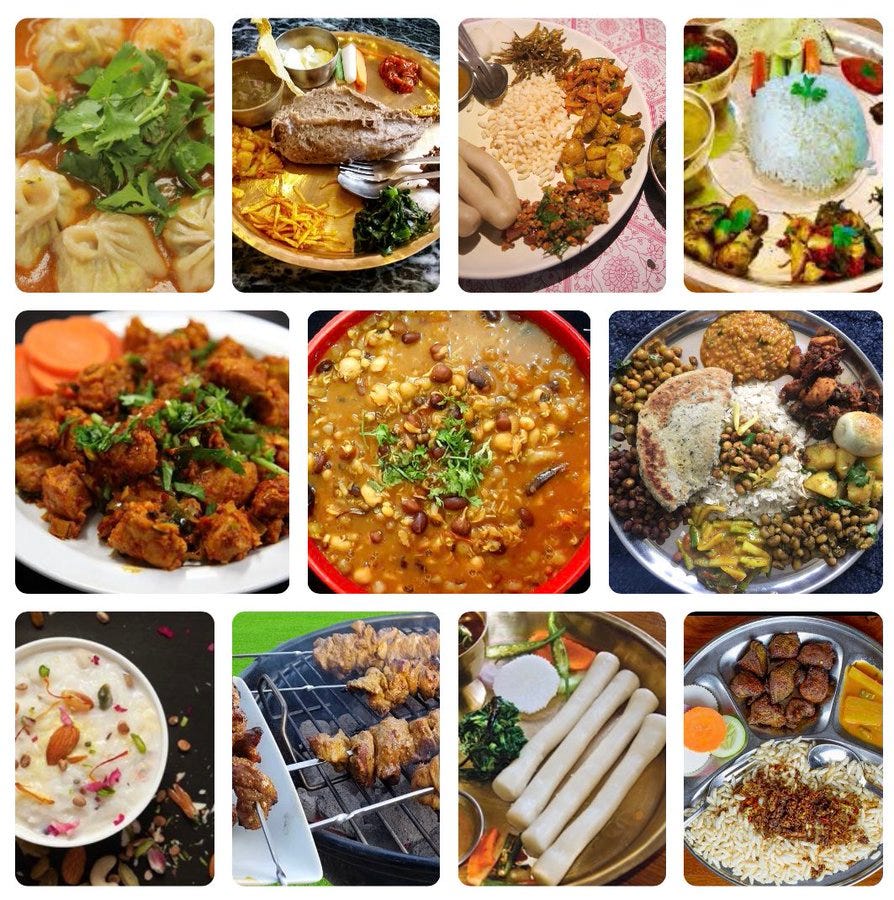
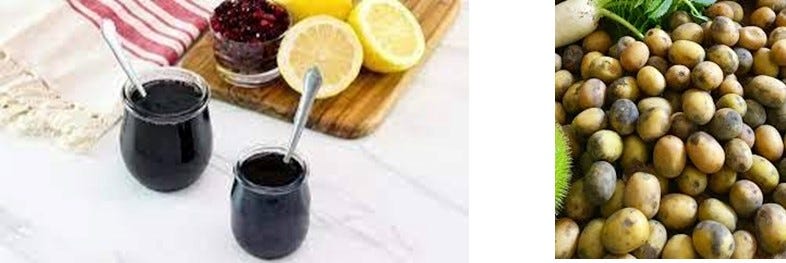
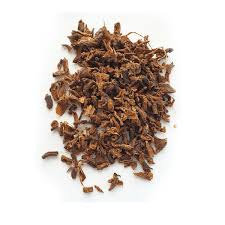
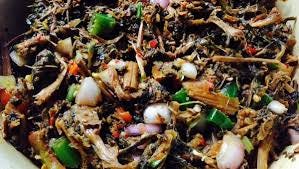
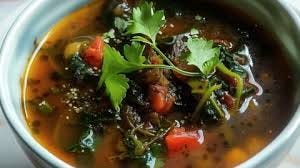
science vs culture, love it pak nirmal (y)
Cooking is really calming .sharing foods with friends and family... 😍😍